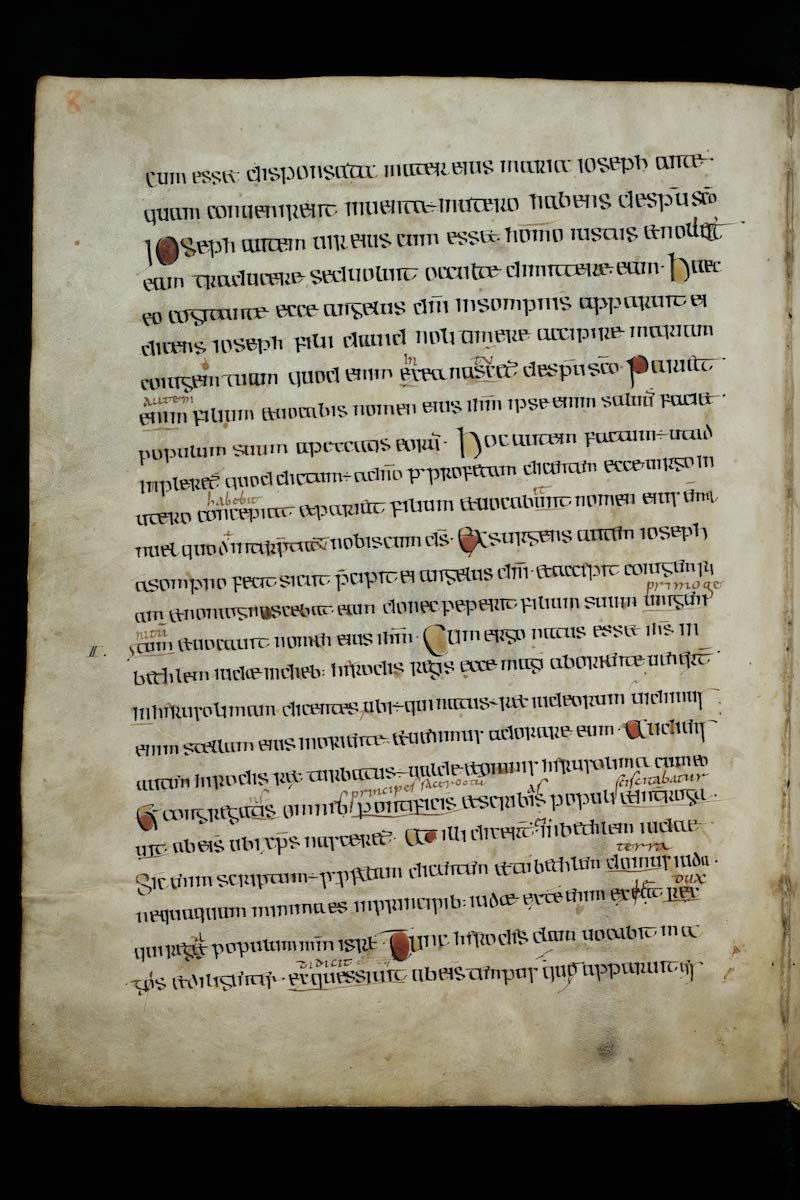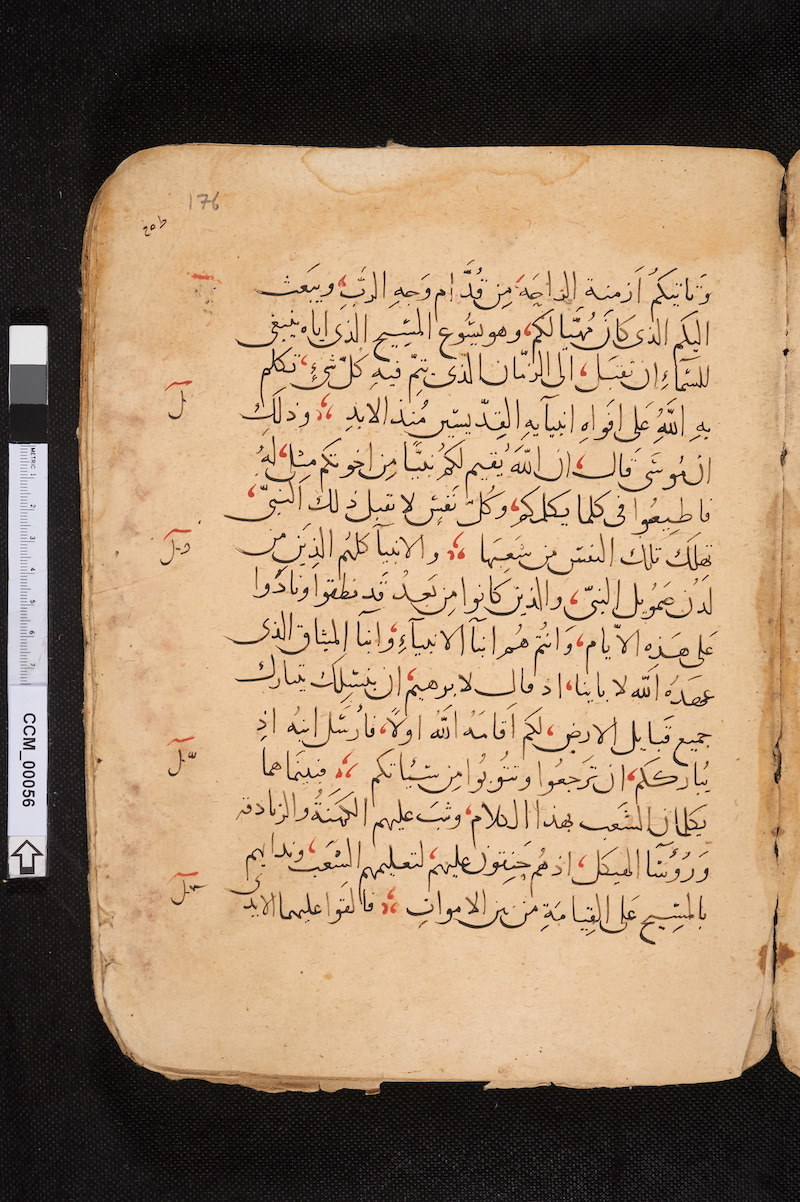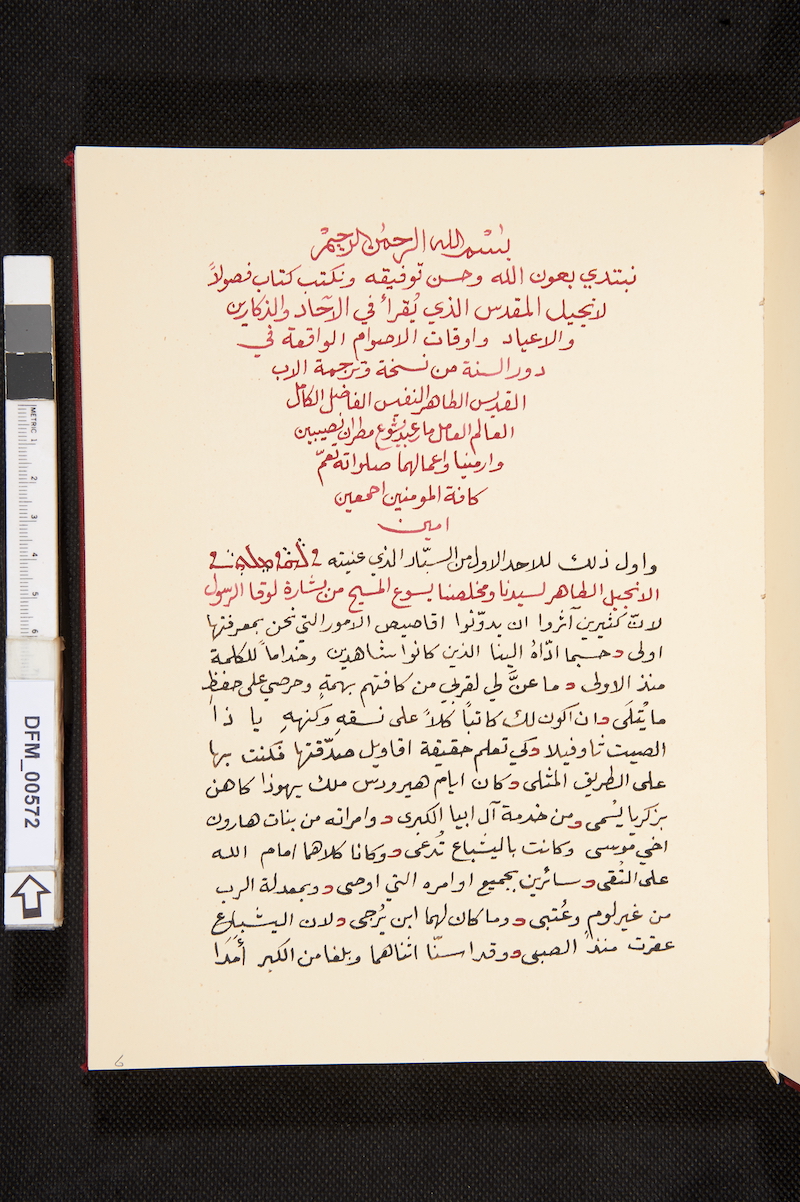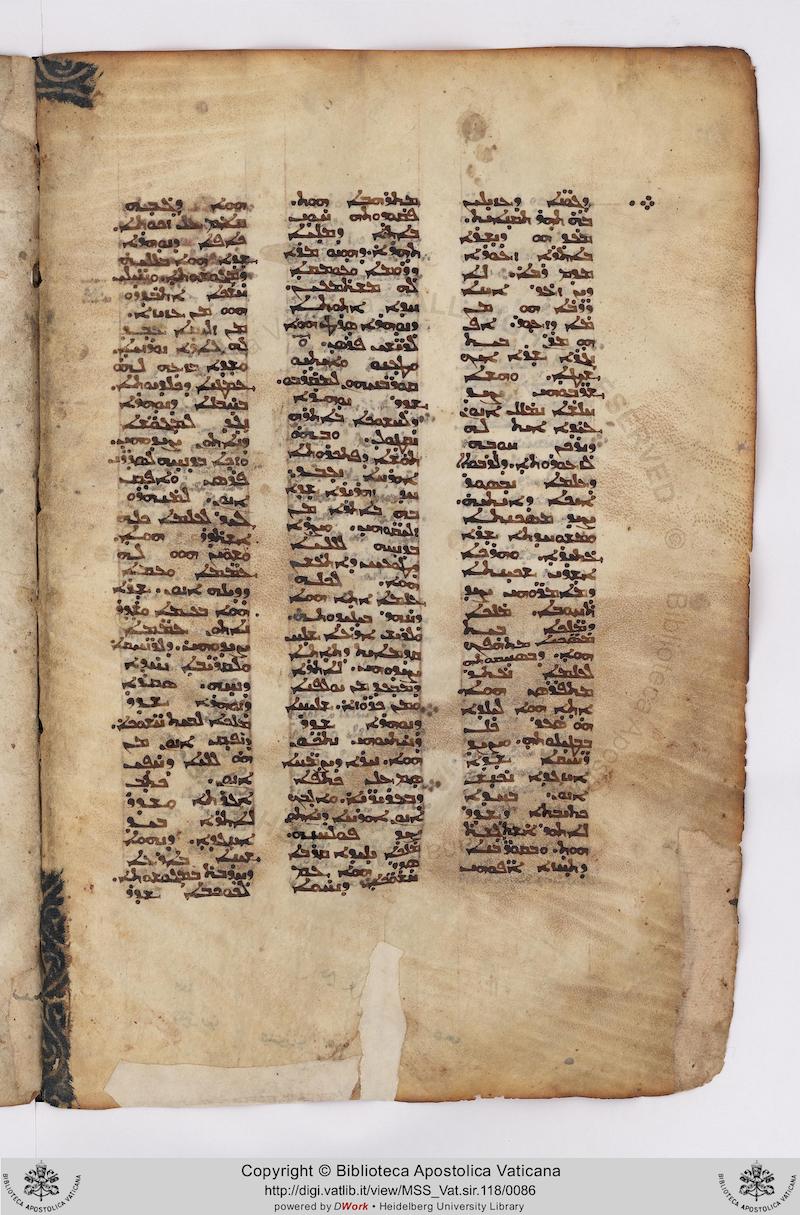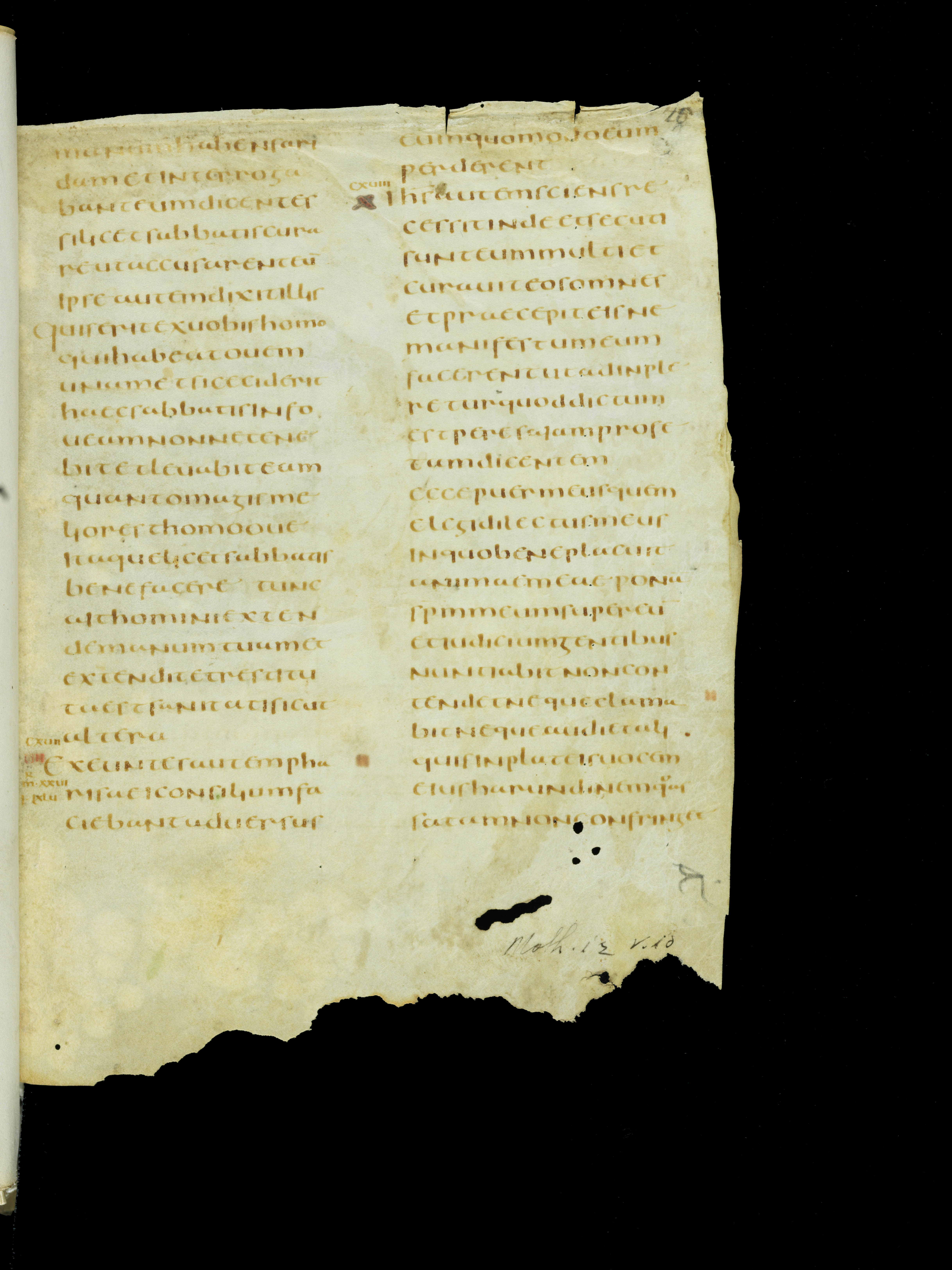
Half-Uncial, 5th century
-
Title
Gospels -
Text
Matthew 12:10-20 -
Language(s)
Latin -
Writing System
Roman -
Script(s)
Half-Uncial -
Country
Switzerland -
City
St. Gall -
Repository
Stiftsbibliothek -
Shelf Mark
1395, page 25 -
Century
5th century -
Year Range
410-420 -
Place Of Origin
N Italy, Verona (?) -
Bibliography
Gustav Scherrer, Verzeichniss der Handschriften der Stiftsbibliothek von St. Gallen (1875), 461-464.
-
External Facsimile
This early-5th-century fragmentary manuscript is the oldest extant copy of the Vulgate translation of the Gospels. The book of which it is now a part, St. Gall codex 1395, is a collection of manuscript fragments from the early Middle Ages which was bound together in the modern period.
The text is written in Half-uncial script in scriptio continua – without any spaces between words. Half-Uncial is a minuscule script widely used for Christian texts in late antiquity, though more often for texts other than the Bible, for which Uncial seems to have been preferred. This is one of only about 50 surviving examples of Half-Uncial from late antiquity.
Half-Uncial is the ancestor, directly or indirectly, of most medieval minuscule scripts, and therefore the ancestor also of our lower-case Roman alphabet. Most letterforms are therefore recognizable to the modern reader. Exceptions are the tall s, which has the shape of a candy cane and is liable to confusion with r; the g, which looks like a long squiggle with a bar across the top; and the li ligature, in which i dangles off the end of the l. a also has an open top, which can make it look u. See Special Paleographic Features for examples. Although Half-Uncial uses mostly the forms of our lowercase alphabet, it retains the "uppercase" form of N.
In the margins, the numbers of the Eusebian canon tables are given in red (which has sometimes discolored with time), and the section numbers, which indicate parallel passages in other gospels, are clustered around the canon table numbers in the same ink as the text. These numbers would have directed the reader to the canon tables at the beginning of the manuscript, but these pages do not survive.
Acknowledgements: Described by Carin Ruff
Transcription
Column 1
1 manum habens ari(-)
2 dam et interroga(-)
3 bant eum dicentes
4 si licet sabbatis cura(-)
5 re ut accusarent eu(m)
6 ipse autem dixit illis
7 Quis erit ex uobis homo
8 qui habeat ouem
9 unum et si ceciderit
10 haec sabbatis in fo(-)
11 ueam nonne tene(-)
12 bit et leuabit eam
13 quanto magis me(-)
14 lior est homo oue
15 itaque licet sabbatis
16 bene facere tunc
17 ait homini exten(-)
18 de manum tuam et
19 extendit et restitu(-)
20 ta est sanitati sicut
21 altera
22 Exeuntes autem pha(-)
23 risaei consilium fa(-)
24 ciebant aduersus
Column 2
1 eum quomodo eum
2 perderent
3 Ie(su)s autem sciens re(-)
4 cessit inde et secuti
5 sunt eum multi et
6 curauit eos omnes
7 et praecepit eis ne
8 manifestum eum
9 facerent ut adimple(-)
10 retur quod dictum
11 est per esaiam profe(-)
12 tam dicentem
13 ecce puer meus quem
14 elegi dilectus meus
15 in quo bene placuit
16 animae meae pona(m)
17 sp(iritu)m meum super eu(m)
18 et iudicium gentibus
19 nuntiabit non con(-)
20 tendet neque clama(-)
21 bit neque audiet ali(-)
22 quis in plateis uocem
23 eius harundinem q\u/as(-)
24 satam non confringet
Paleographic Features
1. In line 3 of col. 1, you can see the difference between a and u in this script. They are easy to confuse with one another. The second letter in this line is an a and the sixth is a u. Note how the first stroke of a curves around to the right for a slightly more closed shape, while the first stroke of u opens slightly to the left.
2. The first letter in col. 1, line 4 is an s.
3. The third and fourth letters in col. 1, line 4 are an li ligature: the i dangles off the curved foot of l.
4. In line 13 of col. 1, five letters from the end of the line, you can see the distinctive Half-Uncial g.
5. In col. 2, line 3 you can see an s and an r next to each other near the end of the line. The shoulder of s curves up above minim-height, whereas the shoulder of r comes to a sharp point at minim-height and then curves down. That distinction between the two letters holds true in all the medieval minuscules that descend from Half-Uncial.
6. Eusebian canon and section numbers appear to the left of the bottom lines of col. 1. The red numeral IIII refers to canon table 4 at the beginning of the manuscript (now lost), and the brown numbers refer to parallel passages that would have been listed within that table.
7. The first word in col. 2, line 8 is manifestum. Note the distinction between f and s, which can be mistaken for one another.
